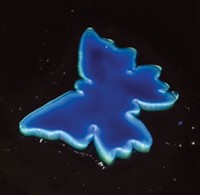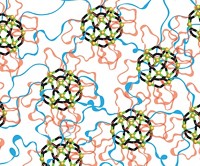Advertisement
Grab your lab coat. Let's get started
Welcome!
Welcome!
Create an account below to get 6 C&EN articles per month, receive newsletters and more - all free.
It seems this is your first time logging in online. Please enter the following information to continue.
As an ACS member you automatically get access to this site. All we need is few more details to create your reading experience.
Not you? Sign in with a different account.
Not you? Sign in with a different account.
ERROR 1
ERROR 1
ERROR 2
ERROR 2
ERROR 2
ERROR 2
ERROR 2
Password and Confirm password must match.
If you have an ACS member number, please enter it here so we can link this account to your membership. (optional)
ERROR 2
ACS values your privacy. By submitting your information, you are gaining access to C&EN and subscribing to our weekly newsletter. We use the information you provide to make your reading experience better, and we will never sell your data to third party members.
Synthesis
Cyclic Gradient COPolymers Debut
This new class of copolymer starts with one monomer, gradually switches to another, then forms a closed loop
by Jyllian N. Kemsley
June 6, 2011
| A version of this story appeared in
Volume 89, Issue 23
Copolymers can take a variety of forms, among them versions with alternating monomers, alternating blocks of monomers, and gradients in which the monomer gradually switches from predominantly one type to another. Now there’s a new class to add to the list: cyclic gradient copolymers (Angew. Chem. Int. Ed., DOI: 10.1002/anie.201101853). To create the novel species, Stanford University’s Robert M. Waymouth and colleagues copolymerized δ-valerolactone and ε-caprolactone using an N-heterocyclic carbene catalyst. Since δ-valerolactone reacts faster, the polymer starts with that monomer and gradually switches over to ε-caprolactone as δ-valerolactone runs out. The growing polymer is zwitterionic, with a negatively charged alkoxide on the growing end and a positively charged imidazole on the other. The attraction between the charges promotes eventual cyclization, producing a ring with both an abrupt and a gradual structural switch. In linear copolymers, those with gradients have different properties from those with sharp interfaces. Circular polymers also behave differently from their linear counterparts. Combine a cyclic polymer with both a gradient and a sharp interface, and “all bets are off,” Waymouth says. His group is now studying the polymers’ morphology and functional properties to see exactly how they might behave.






Join the conversation
Contact the reporter
Submit a Letter to the Editor for publication
Engage with us on Twitter